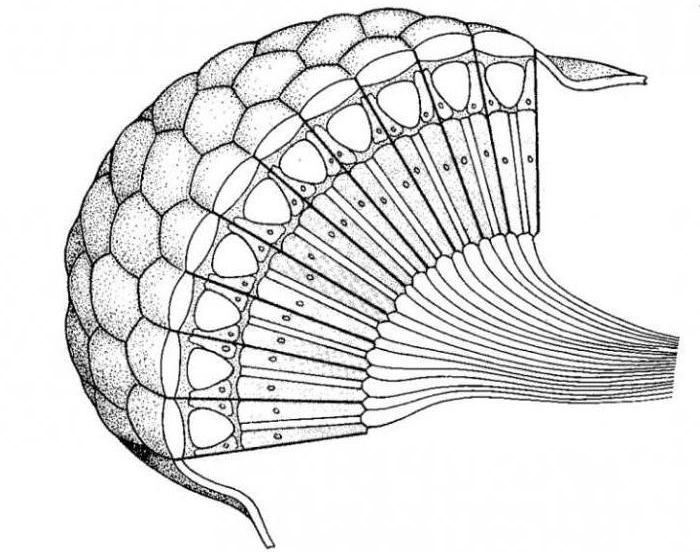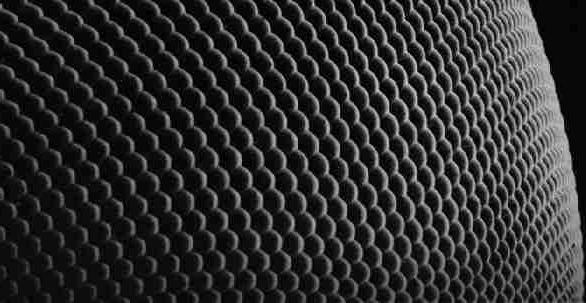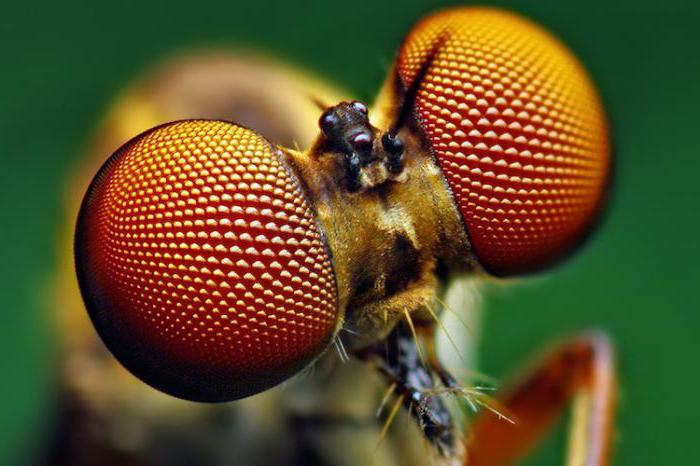Facetic eyes: What do they differ from simple?
In the process of evolution of vision, some animals have quite complex optical instruments. This is definitely a facet's eyes can be attributed. They were formed in insects and crustaceans, some arthropods and invertebrates. What is the difference between the facet's eyes from simple, what are its main functions? Talk about it in our today's material.
Facet's eyes
This is an optical system, raster, where there is no uniform retina. And all receptors are combined into small retinules (groups), forming a convex layer that does not contain any more nervous endings. Thus, the eye consists of a variety of individual units - Ommatidia, combining into a general system of view.
The eyes of the facet, inherent in, differ from the binocular (inherent in the person) with a bad definition of small parts. But they are able to distinguish the fluctuations in light (up to 300 Hz), whereas for a person the limit features are 50 Hz. And another membrane of this type of eye has a tubular structure. Due to this, the facets do not have such features of refraction, like farewell or myopia, the concept of accommodation is not applicable for them. 
Some features of the structure and view
Many insects occupy a majority of the head and are actually still. For example, the eyes of the phasenants in dragonflies consist of 30,000 particles, forming a complex structure. At the butterflies - 17,000 Ommatidiev, the flies - 4 thousand, at the bee - 5. The smallest number of particles in the worker is 100 pieces.
Binocular or facet?
The first type of view allows you to perceive the volume of objects, their small parts, evaluate the distance to objects and their location in relation to each other. However, a person is limited to an angle of 45 degrees. If the review is needed more complete, the eyeball moves on the reflex level (or we will turn your head around the axis). Facetic eyes in the form of a hemisphere with Ommatidia allow you to see the surrounding reality from all sides, without turning the organs of vision or head. Moreover, the image that transmits the eye is very similar to the mosaic: one structural unit of the eye is perceived by a separate element, and together they are responsible for recreating the full picture. 
Varieties
Ommatids have anatomical features, as a result of which their optical properties differ (for example, different insects). Scientists define three types of facet:

By the way, some types of insects have a mixed type of phasequarters of vision, and many, in addition to those considered by us, have simple eyes. So, the flies, for example, on the sides of the head are pair of paired bodies of fairly large sizes. And there are three simple eyes on the theme, performing auxiliary functions. The same organization of the organs of vision and the bee - that is, there are only five eyes!
Some crustaceans, facetful eyes are sitting on moving grows and stalks.
And some amphibians and fish have an additional (dark) eye, which distinguishes the light, but has substantive vision. The retina consists only of cells and receptors.
Modern scientific development
Recently, the eyes of the facet - the subject of study and delight of scientists. After all, such organs of view, due to their original structure, give the ground for scientific inventions and the research in the world of modern optics. The main advantages are a wide overview of the space, the development of artificial faces used mainly in miniature, compact, secret surveillance systems.
